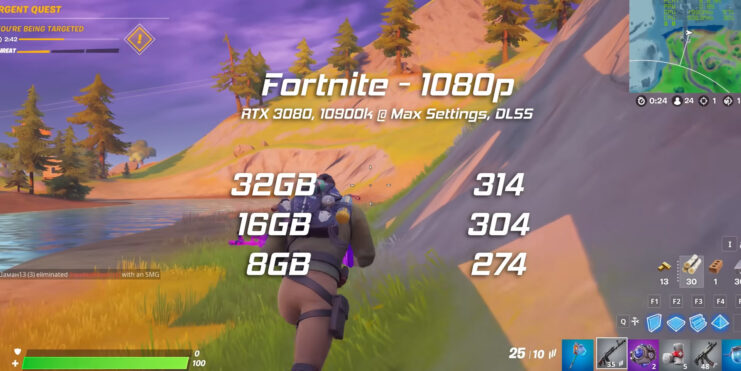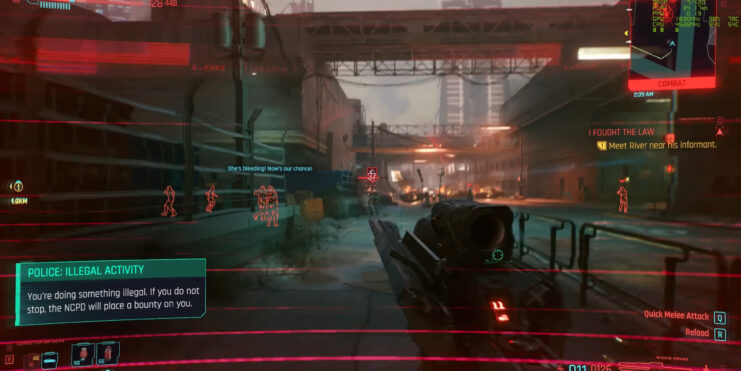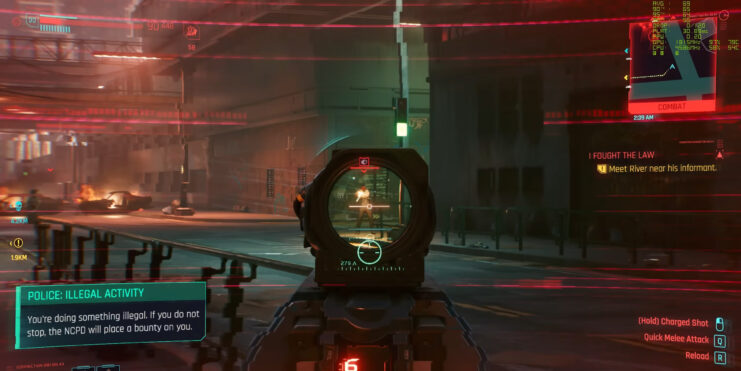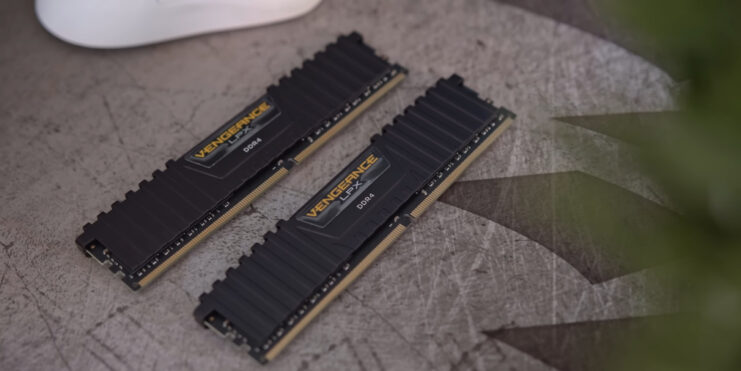RAM, or random access memory, is a critical component in a computer’s performance, ranking right after the CPU and GPU, especially in the context of gaming. It acts as the system’s short-term memory, storing temporary files needed by games and applications.
Today, we want to talk about various aspects, including the effects of adding more memory, the importance of RAM speed, and how to balance performance enhancements with budget considerations.
But first, do you know what the difference is between RAM and unified memory? Doing some research on it might help you decide which one is better for your setup.
RAM’s Impact on FPS
The relationship between additional random access memory and improved performance is not always straightforward. While random access memory is a crucial component of any gaming setup, its impact on performance, particularly on frames per second (FPS), varies based on several factors.
| Scenario | Description | Impact on FPS |
|---|---|---|
| Low RAM Systems | Below game’s required RAM level. | Significant FPS improvement. |
| Sufficient RAM Systems | Meets/exceeds game’s minimum RAM needs. | Minimal FPS gains. |
| Minimum RAM Requirement | Baseline RAM for modern games. | Essential for optimal performance. |
| RAM Capacity Assessment | Evaluating current RAM in system. | Crucial for deciding on upgrades. |
| Point of Diminishing Returns | When additional RAM doesn’t boost FPS notably. | Little to no FPS enhancement. |
Speed and Gaming Performance
RAM speed, measured in MHz, plays a role in enhancing gaming performance, but its impact varies. In systems with Ryzen-based CPUs, faster RAM can lead to noticeable improvements in FPS and overall performance. This is because Ryzen processors benefit more from higher random access memory speeds due to their architecture.
The extent of this improvement varies between different games and applications. While faster random access memory can provide a boost, the price difference between higher and lower speed modules should be considered.
Budget constraints might necessitate prioritizing other components, such as the CPU or GPU, which have a more direct influence on gaming performance. For most gaming setups, especially those not using Ryzen CPUs, the benefits of extremely high-speed RAM might not justify the additional cost.
Optimal Choices for Gaming Systems

For new gaming systems, a good starting point is a 2666MHz DDR4 memory kit. This speed offers a balance between cost and performance, providing decent gaming experiences without incurring the higher costs associated with faster memory modules like 3200MHz or higher.
In comparison to the baseline 2133MHz memory, it provides a tangible performance uplift without breaking the bank. For gamers looking to ensure a smooth gaming experience, having at least 8 GB of RAM is recommended.
This amount is sufficient for most modern games and allows for efficient multitasking, which is essential in today’s gaming scenarios where background applications often run concurrently with games.
Size vs. Speed in Gaming Laptops and PCs
Both the size and speed of RAM are important, but their significance varies between laptops and desktop PCs. In gaming laptops, the speed is generally less critical compared to desktop PCs.
This difference is partly due to the integrated nature of gaming laptops, where other factors like the CPU and GPU often play a more dominant role in determining overall gaming performance. On the other hand, desktop PCs, particularly those with AMD Ryzen CPUs, can benefit more substantially from higher speeds.
The increased bandwidth and faster data retrieval rates provided by high-speed RAM can enhance the performance of desktop gaming systems more noticeably than in laptops.
Significance of Insufficient RAM
Sufficient RAM can markedly affect a game’s FPS and overall performance. When a game requires more memory than what is available, the system compensates by using the hard drive for temporary storage. This process, known as paging, is significantly slower than accessing data, leading to noticeable drops in FPS and longer loading times.
This scenario is especially detrimental in fast-paced games where quick response times are crucial. Increasing the amount in a system where the existing memory is inadequate can lead to a noticeable improvement in FPS.
This is particularly true for games that are memory-intensive or for multitasking scenarios where several applications are running simultaneously.
What are the Benefits?

The importance of having more RAM is particularly pronounced in certain computer configurations, notably laptops with integrated graphics and systems equipped with AMD CPUs. Integrated graphics systems, which are prevalent in many laptops, rely on a portion of the system’s RAM instead of separate video memory.
Enhanced Game Performance
Sufficient RAM ensures smoother gameplay by allowing the game to store and access necessary data quickly. This is crucial for maintaining a stable FPS, especially in games with large, open-world environments or high-quality graphics.
Reduced Loading Times
More RAM can significantly reduce loading times for games, as it allows for faster data processing. Even if you have enough, it is possible that not enough of it is committed. It is possible to allocate some of it. This results in quicker load times when starting games, loading new levels, or transitioning between game scenes.
Improved Multitasking Capability
With more RAM, a gaming system can handle multiple tasks simultaneously without affecting the game’s performance. This means gamers can run background applications like music players, chat software, or streaming tools without experiencing FPS drops.
Elimination of Stuttering and Lag
Insufficient RAM can cause stuttering and lag in games, as the system struggles to manage game data and rendering. Adequate amount addresses these issues, leading to a smoother, more enjoyable gaming experience.
Better Graphics Rendering

For games with high-end graphics, having more of it helps in rendering detailed textures and complex visual effects. This is particularly noticeable in modern games with advanced lighting and shadow effects.
Support for Higher Resolutions
Playing games at higher resolutions, like 4K, requires more RAM (32GB RAM is usually recommended for 4k) to manage the increased graphical data. More of it ensures that these higher resolutions can be handled smoothly without compromising FPS.
FAQs
What makes FPS drop?
FPS drops can be caused by various factors, including outdated or weak hardware (like GPU and CPU), insufficient RAM, high game settings, background applications consuming resources, overheating, or outdated drivers.
Does low RAM limit FPS?
Yes, low RAM can limit FPS. Insufficient RAM causes the computer to use the hard drive for temporary data, which is much slower, leading to reduced frame rates and potential stuttering in games.
Are FPS drops normal?
Occasional FPS drops can be normal, especially in resource-intensive scenes in games or with hardware nearing its limits. However, consistent or severe FPS drops indicate a potential issue with hardware, software, or game settings.
Is 1 TB RAM overkill?
For most users, including gamers and professionals, 1 TB of random access memory is overkill. Such large amounts are typically only needed for highly specialized tasks like large-scale data processing or advanced scientific simulations.
Closing Thoughts
While RAM size and speed are important factors in gaming performance, their impact varies based on the existing system configuration and specific gaming needs.
More RAM can provide a significant boost in systems where memory is a bottleneck, but the benefits diminish in systems with already sufficient memory.
Speed, while important, should be considered in the context of the overall system, especially when balancing performance enhancements with budget constraints.

